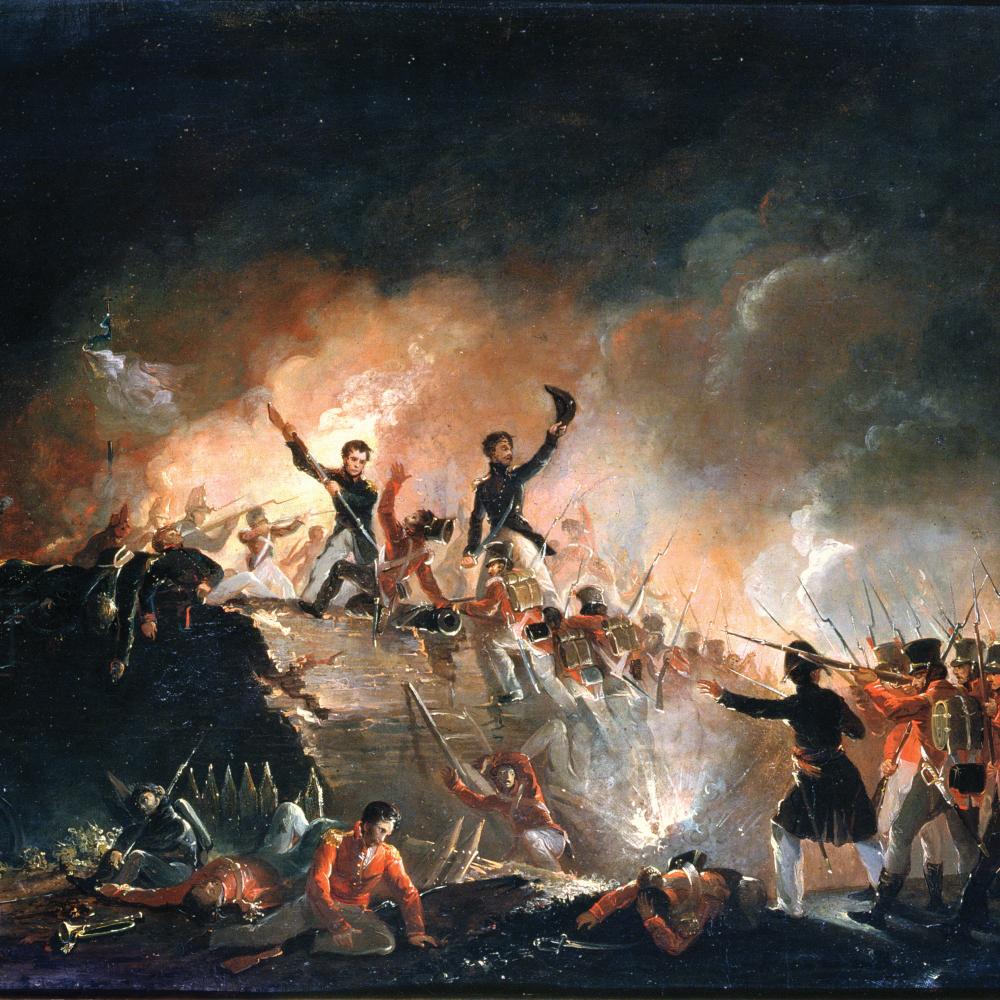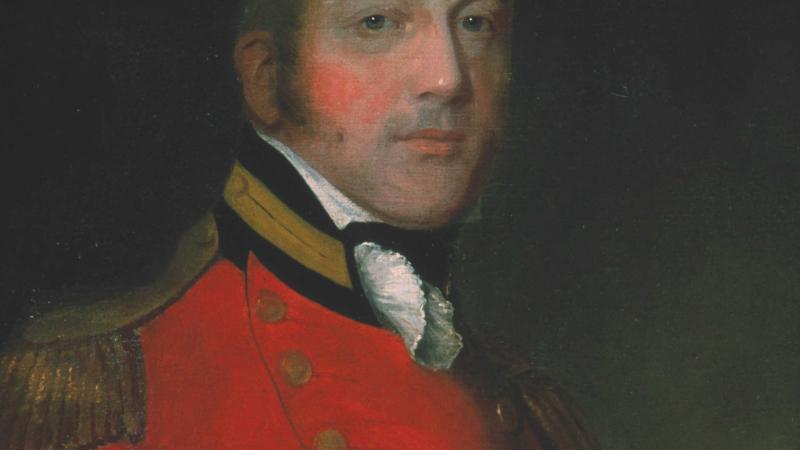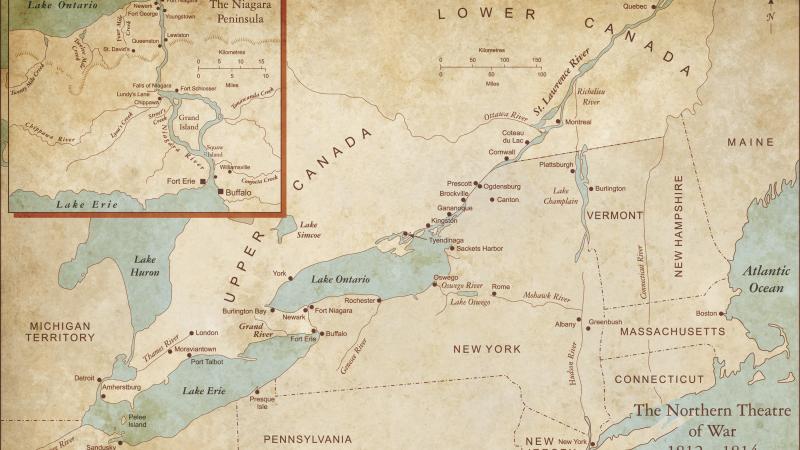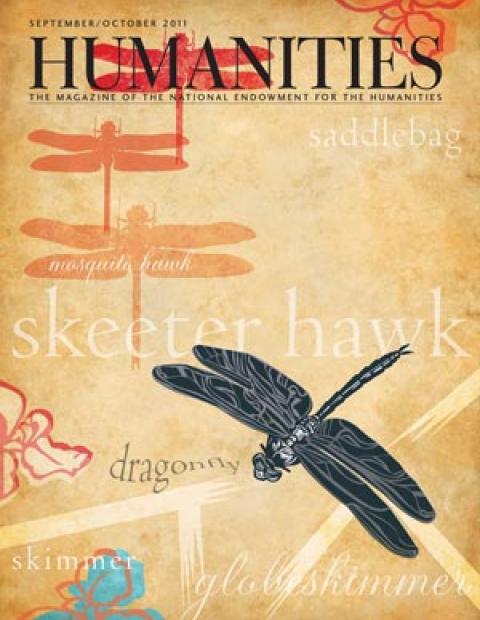When Americans consider the War of 1812, they may think of Francis Scott Key watching the unsuccessful British attack on Fort McHenry or of the USS Constitution thwarting ships of the world’s most powerful navy in its “second war of independence.” When any thought at all is given to the war on land, Andrew Jackson’s campaign in New Orleans comes to mind.
But, in actual fact, the greater part of the fighting in this conflict, which drew in British, American, and tribal interests, took place on the frontier between the United States and Canada. Battles in Upper Canada (modern Ontario) were not only critical to the outcome, but arguably set Canada on its course toward eventual nationhood. In the region bordered by Lake Ontario to the north, Lake Erie to the south, and the Niagara River to the east, and along the St. Lawrence, professional soldiers like Thomas Pearson repelled American forces, refusing to yield British Canada. Pearson’s story begins at sea.
On July 19, 1812, only a day after the United States declared war on Britain, privateer Israel Bray, master of the Buckskin, captured the small British schooner Mary Ann. Bound for Quebec with 350 barrels of tar, the Mary Ann also carried Lieutenant Colonel Pearson, his wife, and infant son. After Bray put a prize crew on board the captured vessel, it made for Salem, Massachusetts. The schooner was just a few miles from her destination when, unfortunately for the American prize crew, she was recaptured by His Majesty’s frigate Maidstone, which escorted the Mary Ann back to Halifax.
The newly liberated Pearson, a decorated and veteran light infantry officer, would prove to be one of the most troublesome opponents the United States faced during the War of 1812. Born in 1781 in the tiny village of Queen Camel in eastern Somerset, he was the son and grandson of Church of England clergymen. He likely would have followed in the footsteps of his father and grandfather, but, in 1793, when Pearson was twelve, France declared war on Great Britain, initiating more than two decades of conflict. This global struggle influenced young Pearson’s career choice: In early 1797, at the age of sixteen, he received a commission as a lieutenant in the 23rd Regiment of Foot, or Royal Welch Fusiliers.
Early Career Commands Attention
Pearson served with his regiment in Holland, the Mediterranean, Egypt, Germany, Denmark, Martinique, Portugal, and Spain, where he played a prominent role in the battle of Albuera, the bloodiest engagement of the Peninsular War and one of the most costly days in British army history prior to 1914. He went into that action as a junior major. The most senior officer still on his feet after the battle, he emerged as the brigade commander and received a brevet promotion to lieutenant colonel and a field officer’s gold medal for his efforts.
Four months later, while commanding the rear guard of Wellington’s army, Pearson was hit by a spent round shot, which broke his thigh bone. Badly wounded, he was sent back to Somerset to recuperate at his parents’ home during the winter of 1811–1812. The injury, which caused him to limp and suffer intermittent pain for the rest of his life, left Pearson unfit for active service, a distressing turn for a fighting soldier. Lieutenant General Sir George Prevost, Governor-General of Canada, who had served with Pearson in Martinique, offered him a staff position as an inspecting field officer of militia—a desk job.
In June 1812, Pearson, his Canadian-born wife, Ann, and their infant son, Thomas Aylmer, set sail for North America. After their brief spell in American captivity, they completed their journey on a warship. Arriving at Montreal in September 1812, Prevost ordered Pearson to take command at the small village of Prescott on the St. Lawrence River. His task was to guard the vital British communication route that ran along the waterway to the west.
In this duty Pearson was ever vigilant. The troops under his command slept clothed, with their muskets beside them; he permitted no boat traffic on the river in summer and no sleigh traffic in winter without a license signed by him. Although he did not attack the American bank of the St. Lawrence, he did organize an intelligence network of paid informers. They were debriefed by Canadian officers, who crossed the river to American territory to gather information.
"Tartar Pearson"
Pearson also had to supervise the training of the somewhat lax Canadian militia. His temper, not improved by his wound, was frequently ignited by the Canadians, who nicknamed him “Tartar Pearson.” At one unit inspection, the nervous commanding officer became confused and was reduced to frequently shouting: “As you were, as you were!” to his men. Pearson put up with this for a short time before yelling at the wretched man: “As you were! As you were! I’m damned if you are as you were for you are not half as good as the last time I saw you!” On another occasion, when a militiaman applied to Pearson for leave, he received the blunt reply, “Go to hell!” “Yes sir, your honor,” the Canadian responded, “and has your honor any orders for the devil?” Pearson liked the retort and doubled the man’s leave. From head to toe, Pearson was a professional soldier who never seemed to understand that there was a difference between elite Welch Fusiliers and Canadian farm boys. He complained to the militia authorities about Canadian officers who “irreparably injured the service by their imbecility.”
In March 1813, Pearson was sent to command at Kingston, where he erected fortifications and inspected the Provincial Marine, the British squadron on Lake Ontario. Finding the captain of one vessel to be lazy, Pearson removed him from command and placed him under arrest. He then solved a putative strike among the workers at the Royal Naval Dockyard by replacing the superintendent and threatening to shoot the ringleaders.
U.S. Invasion Held Off
Things were quiet for some months after Pearson’s return to Prescott, but by the late summer of 1813, the war along the St. Lawrence began to heat up again. The United States, foiled in previous attempts to invade British North America, began planning a major operation against Montreal. It involved two armies: one moving north from the Lake Champlain area, the other moving down the St. Lawrence in an armada of small boats. Pearson, furnished with good intelligence by his spy network, mobilized the local militia and, seeing American cavalry riding through Ogdensburg on the opposite bank, opened fire on the village. The Monroe County Court had just adjourned and the chamber was emptying when a round shot cut through the jury bench.
During the night of November 5, the American flotilla made a daring traverse of the river past Prescott. Pearson opened fire with every gun he had, but was disappointed when he did not sink a single boat. A few days later, he took troops from his garrison and joined a British force from Kingston, which had been shadowing the invaders. On November 11, 1813, this small British army, only 1,200-strong, was attacked by a far superior American force near the farm of prominent loyalist John Crysler. In the resulting battle of Crysler’s Farm, Pearson commanded the British advance guard and was placed in a dangerous situation when his troops were driven back by a spirited American attack. Although his horse was killed under him, Pearson regrouped and his troops held off the enemy assault.
British victory at Crysler’s Farm spelled an end to the American St. Lawrence offensive, and both armies went into winter quarters. Pearson was ordered to Cornwall to keep an eye on the defeated American forces, which were camped across the river at what is now Fort Covington, New York. In December 1813 and January 1814, Pearson conducted several raids against the American bank, but he had come to respect his opponent. When an American officer arrived under a flag of truce, Pearson conversed with him and said some of the few gracious words he is known to have ever spoken: “Sir, your troops are the bravest men I have ever seen, but your officers know little of service.”
Transfer to More Active Theater
In his spare moments, Pearson imposed rigid discipline on the local militia, which caused much grumbling. On one of his last days in the village before being ordered back to Prescott, he encountered Peggy Bruce, an Irish tavern-keeper known for her caustic wit. “Och kernel dare,” she accosted him, “and you’re going to lave us—sure there will be many a dry eye in Cornwall the day you go.” Pearson’s reply is not recorded. Possibly the best he could manage was a dignified “harrumph.”
As the war on the St. Lawrence abated, Pearson badgered his superiors for a transfer to a more active theater. In April 1814, Lieutenant General Gordon Drummond, commanding in Upper Canada, requested Pearson’s services for the Right Division of the British army, deployed to defend the Niagara frontier. Drummond and the commander of the Right Division, Major General Phineas Riall, had served with Pearson and knew his worth. Upon his arrival, Pearson assumed command at the village of Chippawa, midway between Lakes Erie and Ontario.
Pearson was in Chippawa on July 3, 1814, when a well-trained American army, under the command of Major General Jacob Brown, crossed into Canada. It was the beginning of a four-month campaign that would be the longest and bloodiest military operation of the War of 1812. More than three thousand men were killed or wounded.
The next day, Pearson and a small force of infantry, artillery, and cavalry thwarted American plans to make a quick march north to seize the important bridge over the Chippawa River. His opponent that day was young Brigadier General Winfield Scott, one of the most aggressive officers in the United States Army and a man who would go on to greater fame in the Mexican-American War and later the American Civil War. Unfortunately for Scott, he had the infernal bad luck to encounter Pearson, the very soul of obstinacy, who taught him an object lesson on how to conduct a proper delaying action. It lasted nearly the whole day and by the time Scott reached the Chippawa, the British had dropped the bridge into the river.
Major General Riall now assumed command of the British forces. Personally convinced that Americans were poor soldiers, Riall crossed the river on July 5, 1814, and engaged in a pitched battle with Brown’s army, which gave him a sound drubbing for his troubles. One of the few bright spots in an otherwise miserable day for British and Canadian forces was Pearson’s handling of Riall’s right wing. Consisting of regular light infantry, Canadian militia, and a large force of Native American warriors, the right wing managed to hold off superior American forces until Riall’s army had safely retreated back across the Chippawa.
Forced to withdraw to the shore of Lake Ontario, Riall remained on the defensive until July 24 when, informed that Drummond would join him with strong backup, he sent Pearson out with a reinforced brigade to reestablish contact with Brown’s army. Marching through the night, Pearson found Brown’s troops camped on both sides of the Chippawa. Having accomplished his assigned task, Pearson deployed his troops in a good defensive position on a sandy ridge along a well-traveled country road the locals called Lundy’s Lane.
By the early evening of July 25, Riall and Drummond had arrived with reinforcements when, much to their surprise, they were attacked by Scott. The result was the battle of Lundy’s Lane, the bloodiest engagement of the War of 1812 and a contest notable not only for the obstinacy of the troops on both sides but for the confusing nature of the fighting, which went on into the night. At this action, Pearson commanded a mixed brigade of Canadian regulars and militia, which held Drummond’s right flank. While making an attack on the American left and driving them back, he was wounded in the arm by a musket ball.
When the fighting ended in the early hours of July 26, Major General Jacob Brown had good cause to claim a tactical victory for the Americans, as he had taken the high ground and Drummond’s artillery. But Brown had been wounded, and the officer who assumed command of the American army left the field and withdrew to Chippawa, giving Drummond reason to claim a British victory.
The winner at Lundy’s Lane is debatable, but what is certain is the invaders advanced no farther into Canada and instead retreated south to Fort Erie, where they constructed a large, well-fortified position. Drummond advanced some days later to begin a siege that lasted from early August until the third week of September 1814. For his part, Pearson returned to duty only ten days after his wounding.
On the night of August 14, Drummond ordered a night assault on Fort Erie. From the outset, it went badly. Some of the British attackers managed to seize a bastion in the stone fort, but a powder magazine located under the floor blew up, killing or wounding nearly six hundred men.
One of the dazed survivors was nineteen-year-old John Le Couteur, a lieutenant. When he reached the safety of the British lines, the traumatized Le Couteur threw down his sword, exclaimed that it was “a disgraceful day for Old England!” and burst into tears. Looking up, Le Couteur realized to his horror that he was standing a few feet from General Drummond and his staff, including Pearson. One of the staff officers began to berate the young man for his behavior, but Pearson, guessing the horror Le Couteur had just been through, silenced the critic. He then picked up Le Couteur’s sword, returned it to him, took him by the hand, and gave him some minor duties to perform, which permitted the young officer to regain his self-control.
After this disaster, Drummond continued the siege, although he knew he had no real chance of taking the American position. On September 16, acknowledging it was hopeless, Drummond gave orders to withdraw. His troops were about to move on the following day when the Americans sortied from the fort under Brown’s command and attacked.
Initially, Brown’s troops were successful and captured two of the three British siege batteries. Then, however, they ran into Pearson who counterattacked with his brigade and drove Brown’s forces back in a vicious fight that gave British troops more time to come up and retake the batteries. It was during this combat that Pearson received a rifle bullet in the forehead, which blinded him. The British, meanwhile, managed to force Brown’s troops back into their entrenchments.
Service in Canada Ends
Pearson’s wound brought his service in the War of 1812 to an end. He was taken to his father-in-law’s home in New Brunswick, where he recuperated slowly under his wife’s care. Although his sight gradually returned, he permanently lost the hearing in his right ear. By the time he was fit for service in the spring of 1815, the conflict had been brought to a negotiated end. He left Canada in 1816.
Pearson assumed command of the Royal Welch Fusiliers in 1817 and held that appointment for thirteen years. He reluctantly left his regiment when he was promoted to major general and then held a series of
administrative appointments until he retired in 1843 after forty-six years in service. Pearson died in 1847 in Bath, England, where his remains and those of his wife are interred in St. Swithin’s Church.
During his lengthy career, Thomas Pearson fought in fifteen major battles and countless minor actions on three continents, received two battlefield promotions, two field officer’s gold medals, a knighthood, and five wounds. In Britain, he is remembered only by his regiment, the Royal Welch Fusiliers; his portrait hangs in their museum at Caernarfon Castle in Wales. Pearson is almost completely unknown in Canada, the nation descended from the British colonies whose existence he fought to preserve. Like many others, he is a forgotten hero in a forgotten war.




